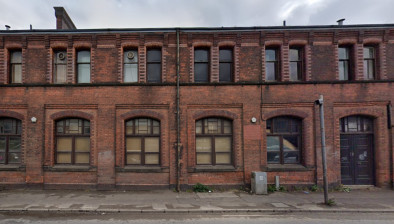Roddy Cormack: From toilet paper to steel cladding – how to manage a supply sheet storm
Construction law specialist Roddy Cormack on the shortages of construction materials and the impact this may have on the sector.

Roddy Cormack
Remember when there was no toilet paper on the shelves in the supermarket? I’m still not very clear on what triggered the run on the roll, but excessive demand very quickly overwhelmed the supply chain, leading to shortages in the shops. The fact that many people were digging in to their soft-ply stockpile for months afterwards perhaps indicates that whatever caused the panic buying was a storm in a toilet bowl.
What, then, of the shortages of construction materials - the reporting of which is gradually making its way into mainstream media? Is this shortage in a similar vein? The answer is almost certainly no.
A perfect storm
Although it is impossible to definitively identify the causes for the construction materials crises, the likelihood is that it is a perfect storm arising out of the occurrence of several factors at the same time:
- Production of raw materials at source has slowed significantly, if not stopped altogether, for varying periods as a consequence of the spread of Covid and the measures taken to try to contain it. This has impacted the supply chain at its very roots.
- Demand for materials, which was already high pre-pandemic, has accelerated further as clients want to get projects started/moved on/finished as soon as possible with a view to recovering from the economic downturn caused by the pandemic. This has impacted the supply chain at its end points.
- The logistics of moving materials from source to ultimate client has also been hit by: public health restrictions; the blockage of the Suez Canal and the backlog that created; and Brexit. The supply chain has, therefore, also slowed, and occasionally stalled altogether, at various points between its start and end points.
And, of course, basic economic theory teaches us that low supply and high demand results in increasing prices.
The construction sector
Slowing supply and increasing costs creates a double whammy for construction: projects take longer to complete and cost more than originally thought.
Employers (ultimate clients, or employing contractors within the supply chain) may view this scenario as solely a supplier problem where a contract is in place for delivery of a finished building by a particular date and for a fixed price.
Such a view is, however, probably naïve. First, if there are no materials to build with, your project isn’t going to be completed, no matter how tight your contract terms are drafted. Second, if prices rise too high and you don’t agree to pick up at least some of those increases, there is a very real likelihood that you will end up with an insolvent supplier who will have to stop working.
Obviously “if there are no materials” and “if prices rise too high” indicate that materials “may be available” and prices “might not get out of control”. Parties involved in construction could, therefore, legitimately sit back, do nothing, and see how things pan out.
But what if you want to be more proactive in your risk management; what could you do?
Stockpiling
Stockpiling of materials now might seem like a good idea, and while this may work for some, there are various draw backs with that approach:
- If everyone tried to buy everything they needed for the foreseeable future in one go, the entire supply chain would collapse and the overall position could be made worse (the toilet roll scenario).
- Can you really know for sure now what and how much you might need in the future? You may tie up a lot of your working capital on materials that you can’t use.
- Where are you going to stockpile those materials? This could be a particular problem for city centre projects were laydown space may be at a premium. Theft may also be a real risk to consider.
- Is there enough liquidity in your cash flow for you to be able to afford such significant outlay in advance of actual need.
Shortening timescales
Shortening the time between a price and timescale being offered by a supplier and the point at which work/delivery is actually completed can significantly reduce the risk of significant price rises and lead-in period creep.
Such an approach is easy to adopt where you have a small, simple project. It is not, however, an attractive proposition on longer term projects where a client wants a fixed price up front for the entirety of the works, including work packages that might not be commenced until some time in the future.
Some clients may be willing to procure a project though some form of management contracting approach where individual work packages are procured as and when they are required. Such an approach is, however, unlikely to be acceptable to funders who want to know what the final cost to complete is going to be before they commit to any funding.
Allowing time and price fluctuations
An alternative approach would be to negotiate contract terms whereby the risk of a variation in time or price from what was envisaged at the time the contract was entered into is managed within the contract itself with the pain (or gain) being shared by the parties.
Standard form building contracts do provide price fluctuation mechanisms but they are rarely used in practice. That is largely because those mechanisms shift too much of the risk on to the client and they are very admin heavy. It is, however, possible to come up with alternative mechanisms that allocate risk in a more market acceptable way, and which are more easily administered.
Ultimately, however, such revised price and time mechanisms inevitably move a project away from a fixed contract sum and completion date. Most funders, therefore, are unlikely to be happy backing projects procured under such terms.
Pragmatism
There is no single silver bullet that is going to de-risk construction projects in response to the current materials crisis. Different solutions, or combinations of solutions, must be considered when trying to find the best ways forward for each project.
As was the case when the construction industry was faced with lockdowns last year, the bottom line is that pragmatism rather than dogmatism is likely to achieve the best end result for projects. Ignoring the current commercial and practical realities within the market place and demanding things proceed the way they did pre-pandemic is unlikely to achieve the optimum result - at least not every time.
Thinking outside the box and in commercial reality will, at the very least, give you some options when navigating through this current materials sheet storm.
- Roddy Cormack is a construction specialist at law firm Wright, Johnston & Mackenzie LLP














